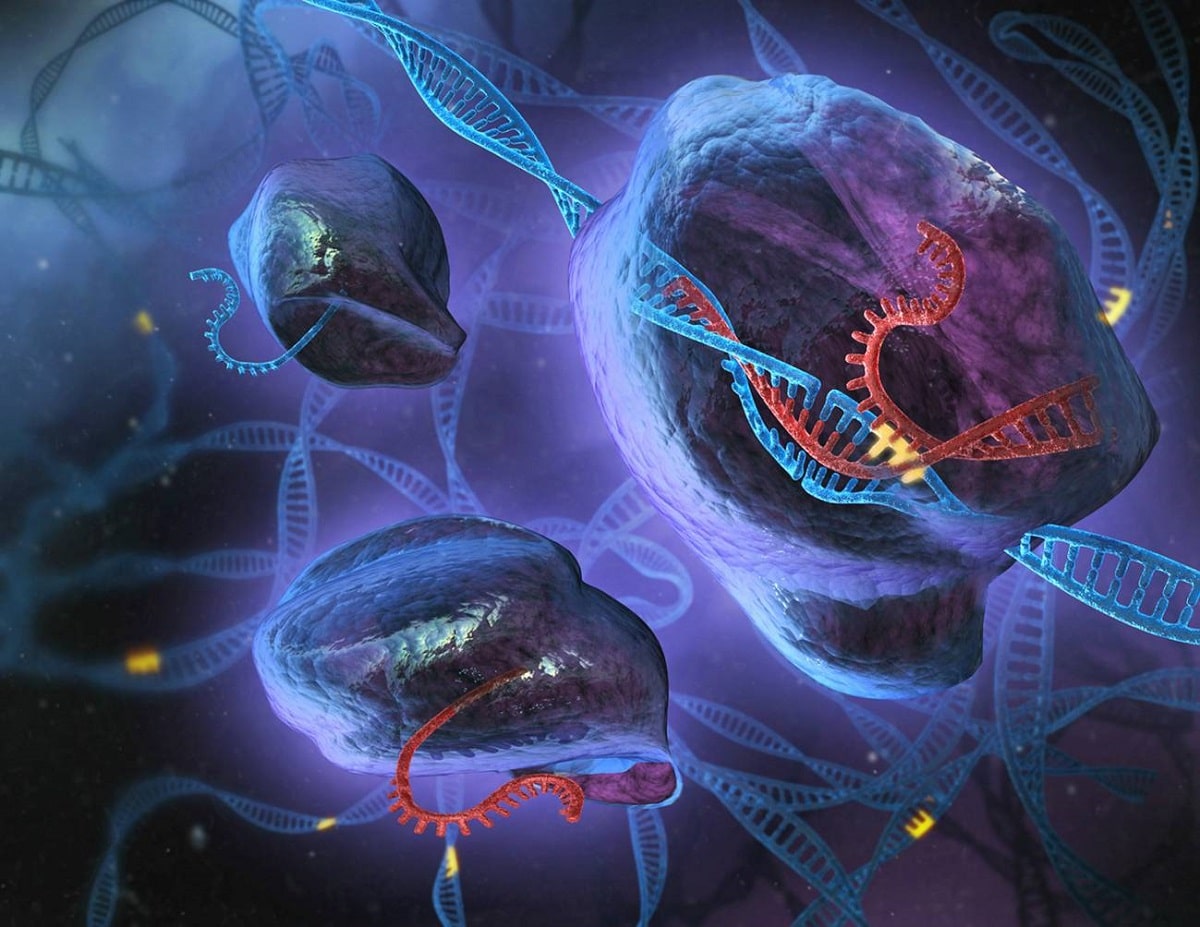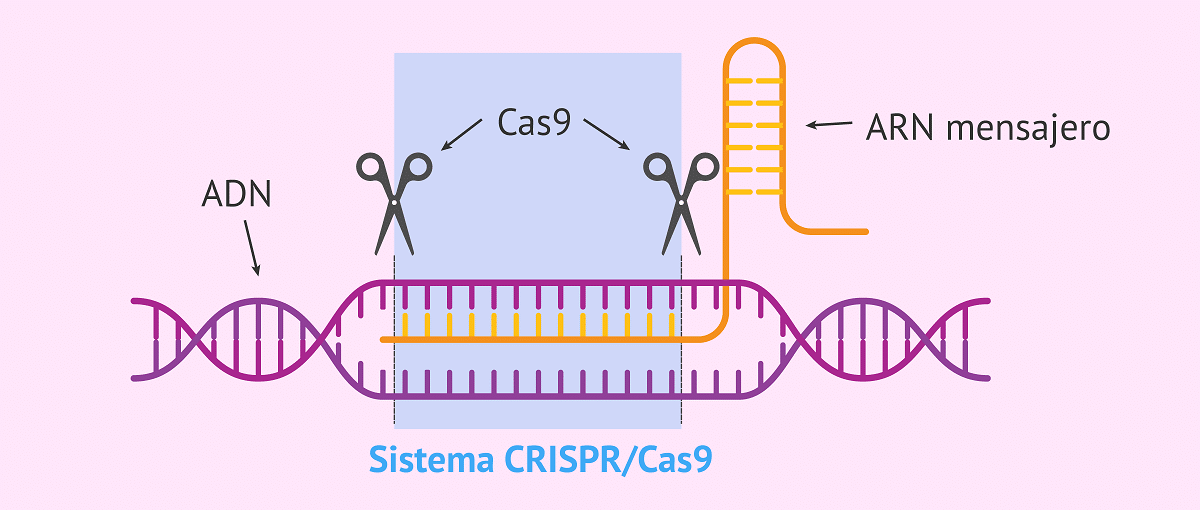
We know that technology is advancing more and more by leaps and bounds. In the world of biology and genetics it is also like that. In this case, many people do not know what is CRISPR nor what is it for. It is a gene editing technique that, in short, is responsible for cutting and pasting people's genes. It was discovered quite some time ago and is bearing its first fruits in the treatment and plastic of various diseases and ailments.
In this article we are going to tell you what CRISPR is, what its characteristics are and why this type of technology is used in the field of genetics and biology.
What is CRISPR

CRISPR is an acronym for Clustered Regularly Interspaced Short Palindromic Repeats. This is a mechanism that bacteria use to defend themselves against viruses and other mobile genetic elements that try to invade their cells.
The way CRISPR works is very interesting. First of all, bacteria incorporate fragments of the DNA of viruses into their own DNA, as a kind of "immunological memory". These fragments are called spacers. Next, when a virus attempts to infect a bacterial cell, the bacterium produces guide RNA that binds to a protein complex called Cas, which cuts and destroys the virus's DNA. The guide RNA is created from the information contained in the spacers, allowing the bacterium to "remember" viruses it has previously encountered.
This form of bacterial immune defense has been used to develop highly precise gene-editing tools. The most popular technique is CRISPR-Cas9, which uses a modified version of the Cas9 protein to cut DNA at a specific location. Changes can then be made to the DNA, such as adding or deleting genes or correcting mutations.
Advantages of CRISPR technology

The great advantage of CRISPR technology is its precision. Guide RNA can be designed to bind to a specific DNA sequence, meaning editing is only done at the desired location. Furthermore, the technique is much faster and cheaper than previous gene editing techniques.
Although CRISPR technology is quite promising, it also raises ethical and safety questions. Gene editing could be used to cure genetic diseases, but could also be used to create "custom" babies or to make changes in the germ line that are passed on to future generations. In addition, errors in editing could have unpredictable consequences, such as cancer or other diseases. Many people discuss it as more than just "playing God."
Gene editing

In nature, organisms have genetic information that controls their growth. Gene editing is a group of techniques that can be used to alter an organism's DNA for different purposes. It is important to note that editing is not the same as genetic modification. First of all, DNA from other species is not used, as in the modification.
Biogenetics, also known as genetic engineering, is a discipline that combines biology and genetics. Its application is in the field of biotechnology. Gene editing is a process by which the piece of DNA on which you want to act is detected, removed and replaced by another new part. It could also happen that once the conflicting fragments are extracted, the cellular machinery takes control and repairs the sequence itself. Using these techniques, scientists can add, remove, or change DNA as needed to achieve desired goals.
Thus, CRISPR is an innovative gene-editing technology that relies on the ability of Cas proteins to cleave DNA in the presence of the appropriate recognition RNA. Since RNA can be synthesized in the lab, the editing possibilities are nearly limitless.
Main uses
CRISPR technology is used to introduce changes into the genome with extreme precision. In its main application we have the following:
- medical applications, as trials to eliminate HIV, or to treat diseases such as Duchenne muscular dystrophy, Huntington's disease, autism, progeria, cystic fibrosis, triple negative cancer or Angelman syndrome. Research is also trying to determine if it could be used as a diagnostic test to detect the
- Fights infectious diseases transmitted by insectssuch as malaria, zika, dengue, chikungunya or yellow fever.
- Vegetal biotechnology. CRISPR technology can be used to produce plant varieties that are better adapted to the environment, resistant to drought or pests. Organoleptic properties can be modified, including physicochemical properties, to make them more suitable for human consumption.
In animal technology, it can be used to introduce species improvements, for example to create herds resistant to typical diseases. Currently, there are no CRISPR technologies approved to treat diseases caused by a single gene that could theoretically be cured through this gene editing. For this reason, medical applications are more of a theoretical than a practical domain and currently have an experimental basis.
CRISPR and bioethics
CRISPR technology for gene editing presents several challenges related to bioethics. Although the main applications are positive, Certain hurdles can be overcome in making this cost-effective technology available to everyone.
As for gene editing applications in primary industry, agriculture and livestock, they are positive as long as they are intended to be beneficial to humans. Of course, it is necessary to analyze each case separately. For example, manipulating plant species to make them resistant to pests is of enormous human interest.
On the other hand, if we consider interventions in ecosystems, we must be more cautious, since any unexpected change could lead to serious or uncontrollable problems.
In terms of medical applications, the use of gene editing technology in humans requires very high security guarantees, and can only be used for diseases for which there is currently no effective treatment, or for diseases that currently have significant side effects. Finally, embryo gene editing is not justified from a scientific or ethical point of view.
I hope that with this information you can learn more about what CRISPR is and its characteristics.